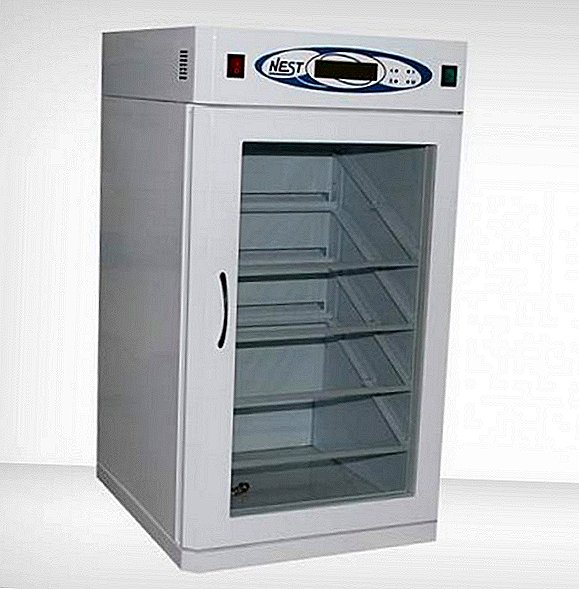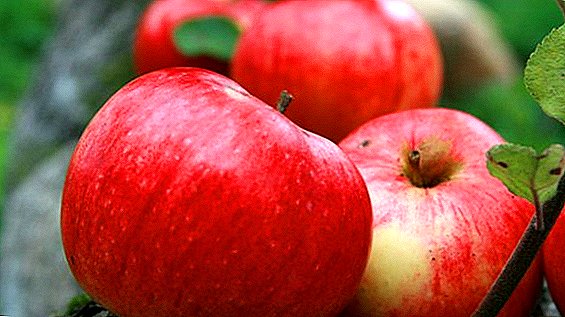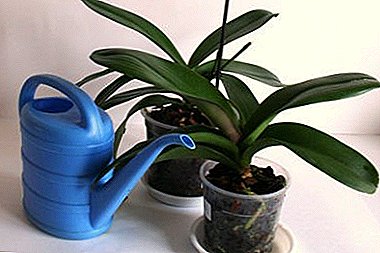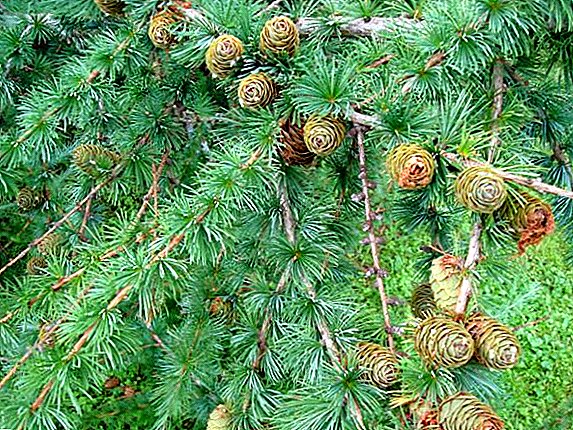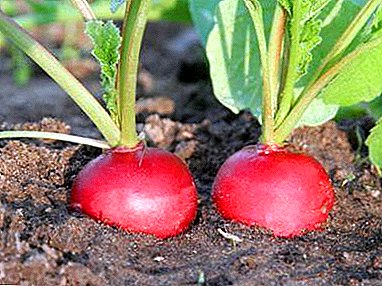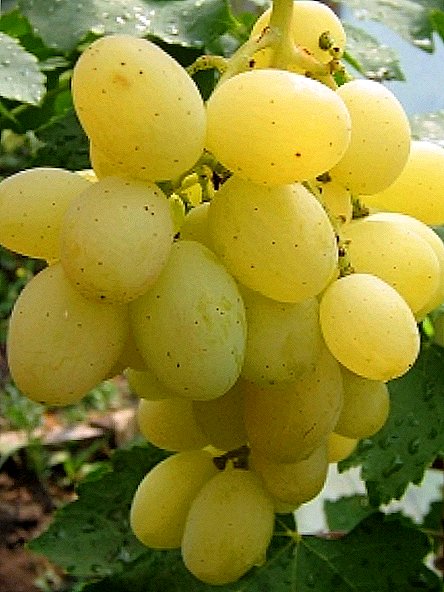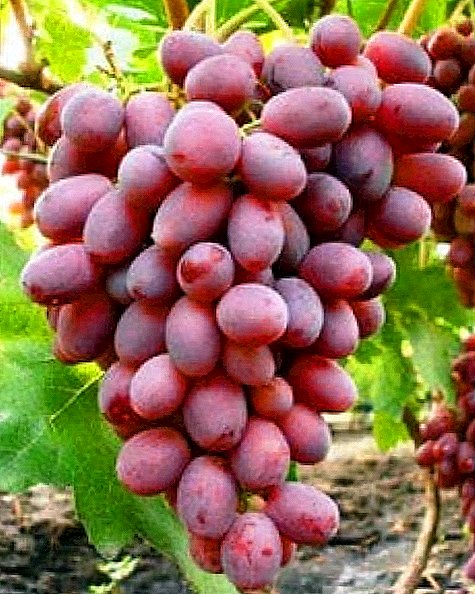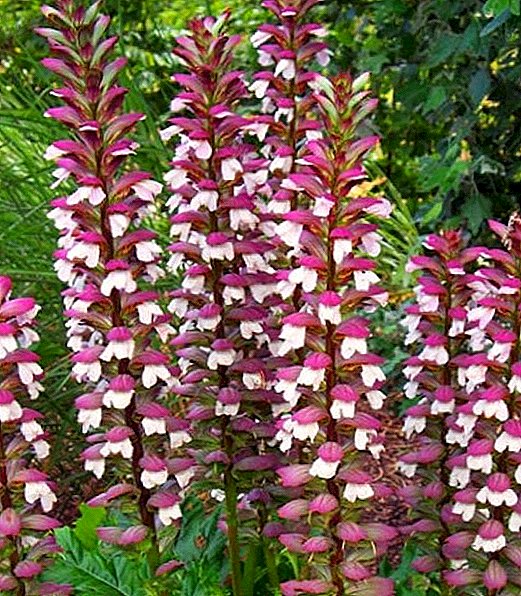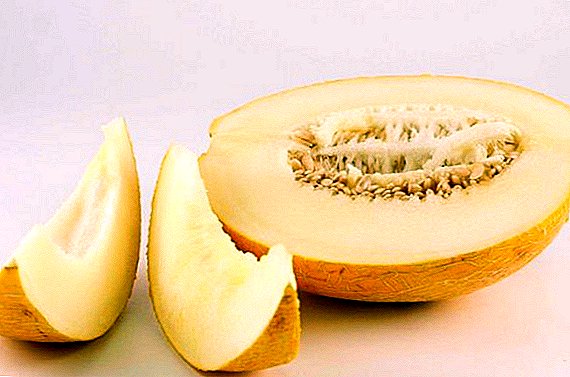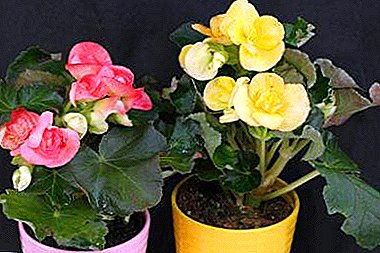
Begonia Elatior (flowering) - the most common and favorite type of flowering begonias. This is a hybrid species, which was made thanks to the crossing of the Socotransky begonia and the tuberous.
The result was an amazing plant: bright flowers against the glossy green leaves - it looks elegant and spectacular.
Below are the photos of Elatior's begonias, which, of course, can only partly convey all the tremendous beauty of the grace of this flower, and also find out how to properly care for the plant.
Botanical description and photo
Begonia Elatior is a representative of the winter group of hybrids Hiemalis. Evergreen perennial, but sometimes grown as an annual plant that is thrown away after flowering.
The maximum height of the flower is forty centimeters. Stem erect and thick, reddish color. Begonia leaves are small; heart-shaped, bright green color with a glossy shine. The flowers of the plant are large, reaching five centimeters in diameter. Petals are ordinary or terry, sometimes decorated at the edges with a fringe.
This is what Begonia Elatior looks like:





History of
Begonia was discovered for the first time by monk Charles Plume (it was in the seventeenth century), he was a member of an expedition to the Antilles. In total, they found six varieties of this plant. Plumier gave the name of the flower in honor of the governor of the island, who was also his companion, Michel Begon.
Conditions of detention
Lighting
Although this beauty loves good lighting, it is better to keep her out of direct sunlight. To grow Elatioor on the windowsill, you need windows to face the western and eastern sides. If you put begonia on the south side, then it will bloom with small flowers.
Air temperature and humidity
In order for the hybrid to grow well and blossom for a long time, it must be kept in a warm room with a temperature of 18-20 degrees Celsius. If the temperature in the room is below the set, then the begonia will stop growing and drop buds. It is impossible to grow a flower at a low temperature, otherwise it will begin to rot its roots or stem. For this reason, temperature drops and drafts are contraindicated in the plant.
Begonia Elatior is very demanding on the humidity of the air, however, it should not be sprayed. To increase the humidity around the plant, you can put the pot on a tray filled with moss, wet clay or peat.
Transplant features
 Begonia should be planted in loose, breathable and permeable soil (a mixture of peat soil, humus and sand). A flower pot must be compact, its root system is very fragile and it is undesirable to replace it too often.
Begonia should be planted in loose, breathable and permeable soil (a mixture of peat soil, humus and sand). A flower pot must be compact, its root system is very fragile and it is undesirable to replace it too often.
It is possible to replant a flower only after the end of the winter period. Before planting it is necessary to shake off the roots of the plant from the ground and put in a weak solution of potassium permanganate for one hour. If the plant has weak and rotten roots, they need to be removed.
A new pot should be three centimeters more than the previous one. The soil for transplantation must be loose and nutritious in order to retain moisture well, but at the same time dry well. You can independently prepare the earth mixture.
For this you will need:
- peat land;
- greenhouse humus;
- leaf humus.
All these components need to be mixed in equal proportions. Coarse river sand should be added to the soil ready for transplantation of begonia. or perlite.
Home care
Watering
Elatio begonia can be watered only after the earthen room dries out (at least to the middle). Watering should be moderate, do not overdo it with water - the flower does not approve of dampness. Neither the pot, nor in the pan water should not stagnate, otherwise the stems of the plant will begin to rot. It is better not to add water than to pour; there will be nothing from a smaller amount of water in a begonia, but overflow will be fraught with serious consequences.
Top dressing
Feed Elatio need very carefully. For feeding, only specialized mineral complex fertilizers are used. It is undesirable to use organic dressing, because the frequent use of organic nitrogen will make the flower stems watery, transparent and brittle. After organic feeding flowering begonias leaves much to be desired, and the flowers themselves do not look as impressive as they should.
Nip
This method allows you to make a flower bush decorative and give any shape at will (pyramidal, spherical, and so on). How to pinch the begonia? It is necessary to carry out this procedure either before flowering or after (in autumn or spring). And you need to pinch like this:
- First you need to find the upper point of growth on the main stem of the plant.
- Now you need to gently pinch it one or two centimeters.
- After two or three weeks, active growth of lateral shoots will begin.
When can I repot the plant after purchase?
 The root system of begonias develops slowly and takes up a long time earthen room, so frequent transplants are undesirable. Healthy begonia that has not fully mastered the pot is not transplanted. It is also undesirable to repot the flower immediately after its purchase. An exception can only be an urgent need for this. Here are a number of good reasons why you can replant begonia:
The root system of begonias develops slowly and takes up a long time earthen room, so frequent transplants are undesirable. Healthy begonia that has not fully mastered the pot is not transplanted. It is also undesirable to repot the flower immediately after its purchase. An exception can only be an urgent need for this. Here are a number of good reasons why you can replant begonia:
- the roots of the flower have outgrown so that they look out of the drainage holes;
- yellowing of the leaves is observed;
- fungal diseases manifest;
- found pests in the soil;
- the pot has fallen into disrepair.
There is another way to help understand when you can repot a flower. To do this, hold the plant with one hand and with the other turn the pot together with the flower upside down. Now you need to gently pull the pot up to expose an earthen room. If he is completely covered with roots, then it is time to plant the plant.
Possible problems
Although begonia is a very fragile plant, but diseases and pests are rarely affected. However, as with any other indoor plant, it can happen such a nuisance as a disease of the leaves. There are several types of flower disease:
- Mealy dew. The leaf is covered with small bright spots, which gradually grow and cover its entire surface with a white powdery coating. Then the sheet darkens and dries.
- Gray rot. On the leaves, the tops of the shoots and flowers appear white spots with a gray bloom, which then darken, become brown and damp. Stems rot and break off. The leaves are covered with large holes.
- Bacterial spotting. The underside of the leaves is covered with watery spots, which eventually darken to brown; leaf stalks darken too.
- Ring spots. The leaves are gradually covered with light spots and dead spots, then the leaves take on a bronze tint.
Also begonia can attack parasites. Here are several types of pests and symptoms of their "tricks":
 Mug is soft. When infected with this parasite, the plant is weakened and does not bloom well. The leaves of the flower brighten and deform, there may be a raid in the form of sugar grains.
Mug is soft. When infected with this parasite, the plant is weakened and does not bloom well. The leaves of the flower brighten and deform, there may be a raid in the form of sugar grains.- Aphid. The leaves turn yellow, insect clusters are visible on the underside (their length reaches two and a half millimeters).
- Dvukhrylka. Begonia leaves turn yellow, and on the underside can be seen insects up to one and a half millimeters long with two pairs of wings covered with white scurf.
- Thrips. The flower is far behind in growth. The leaves become discolored and turn yellow, they show brown insects up to one and a half millimeters in size with two pairs of wings.
- Gallic nematode - A worm that inhabits the roots and the lower part of the stem. It forms galls for laying eggs, and is therefore called the gall nematode. This parasite provokes decay of the root system and the death of the plant.
- Leaf nematode. This worm is no more than one millimeter in length, but the harm from it is not less. At defeat by a leaf nematode, shoots thicken and bend, and light spots appear on the leaves.
If you want to replenish your collection of indoor plants with such an instance as begonia, then you need to be prepared for thorough care and incessant control over all environmental factors of the fragile beauty and to know about the features of its reproduction. But these efforts are not in vain, because for the care of yourself she will delight with a lush bouquet of bright and elegant flowers.


 Mug is soft. When infected with this parasite, the plant is weakened and does not bloom well. The leaves of the flower brighten and deform, there may be a raid in the form of sugar grains.
Mug is soft. When infected with this parasite, the plant is weakened and does not bloom well. The leaves of the flower brighten and deform, there may be a raid in the form of sugar grains.